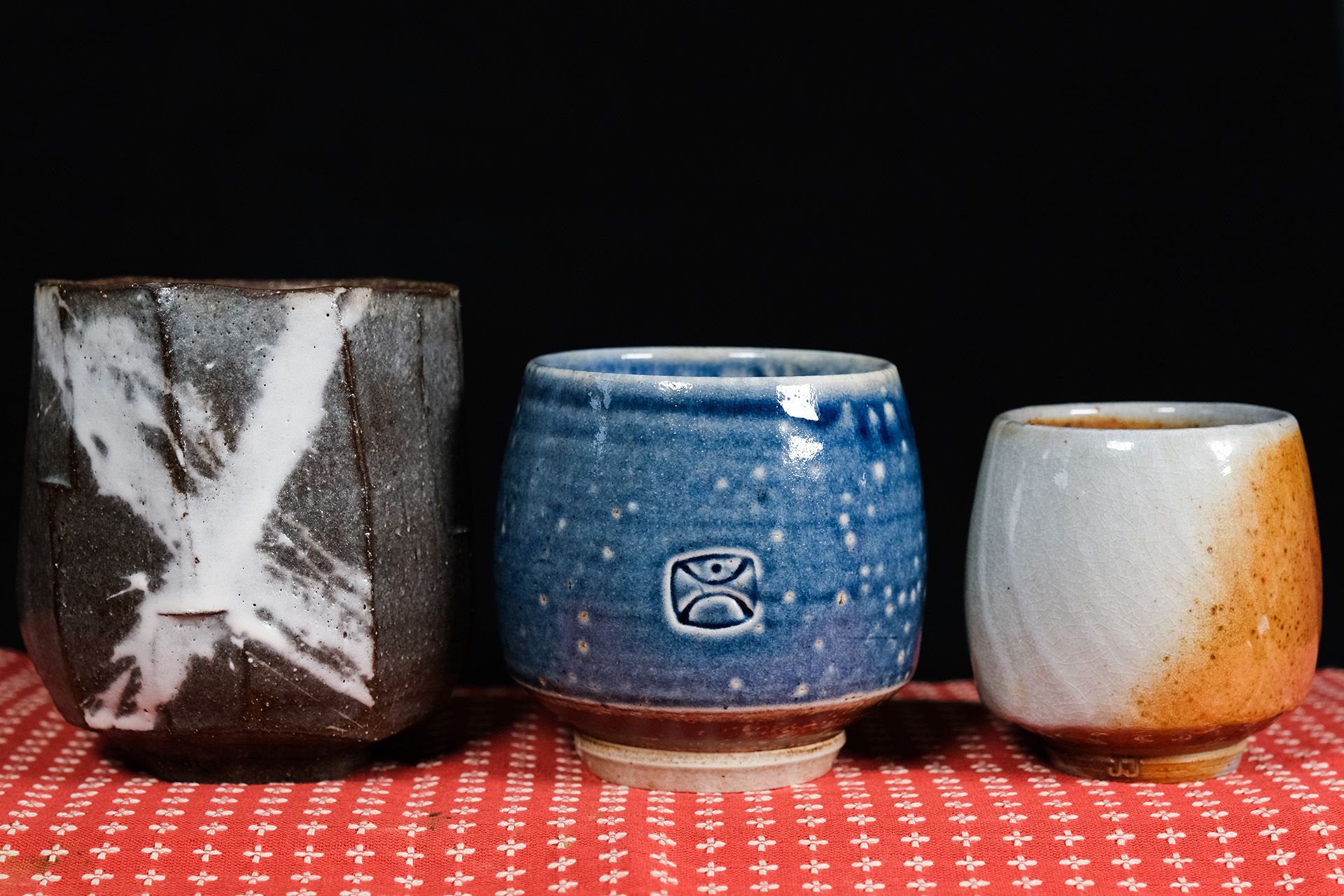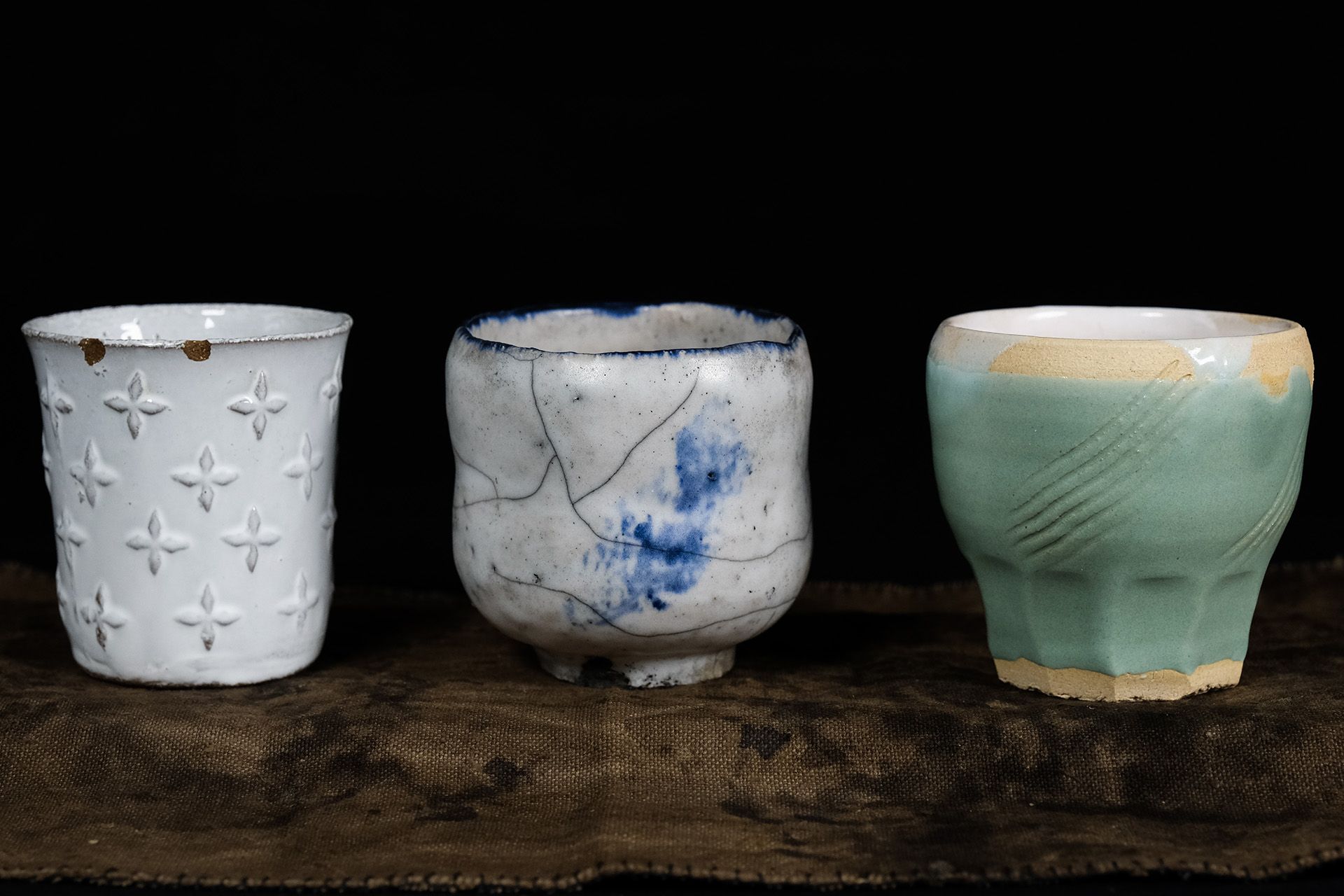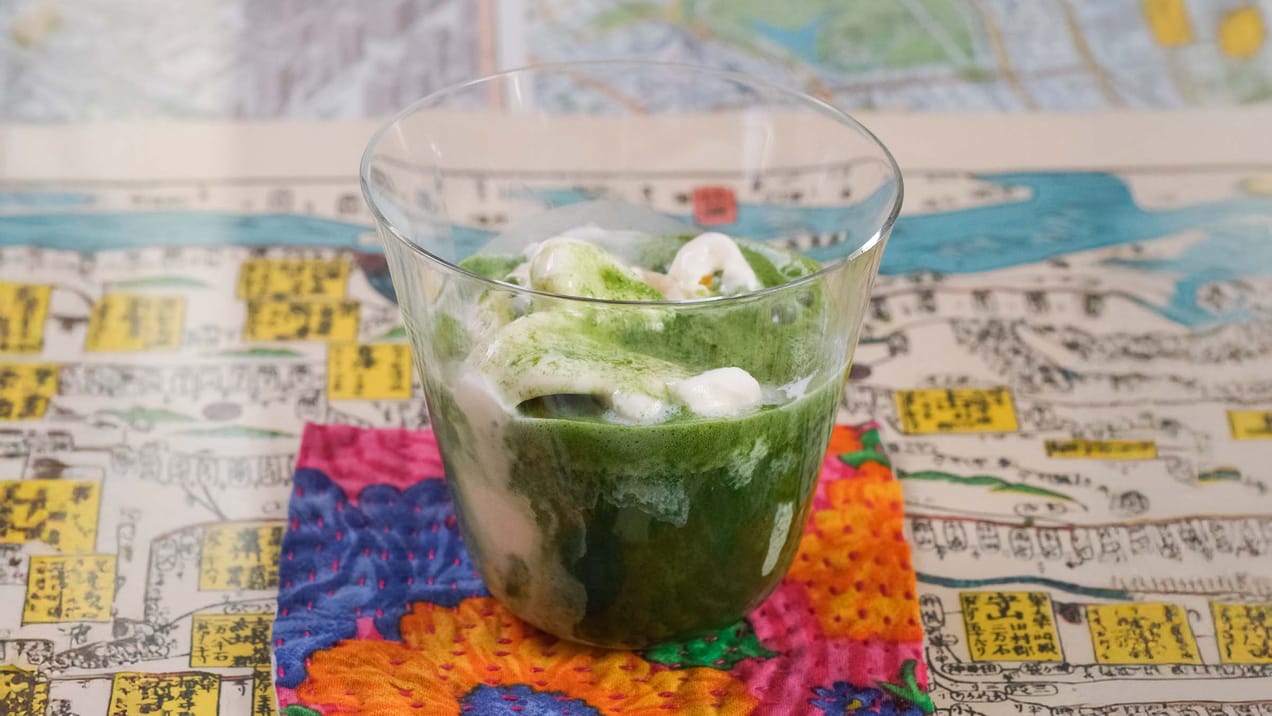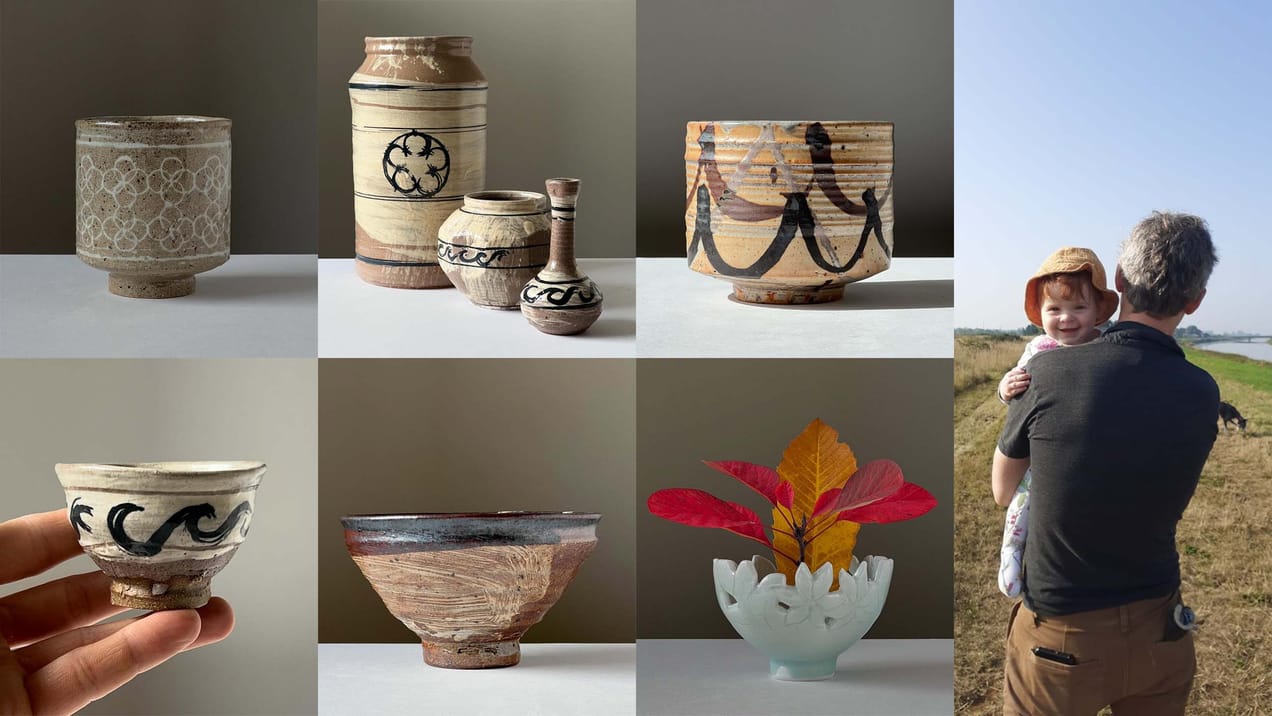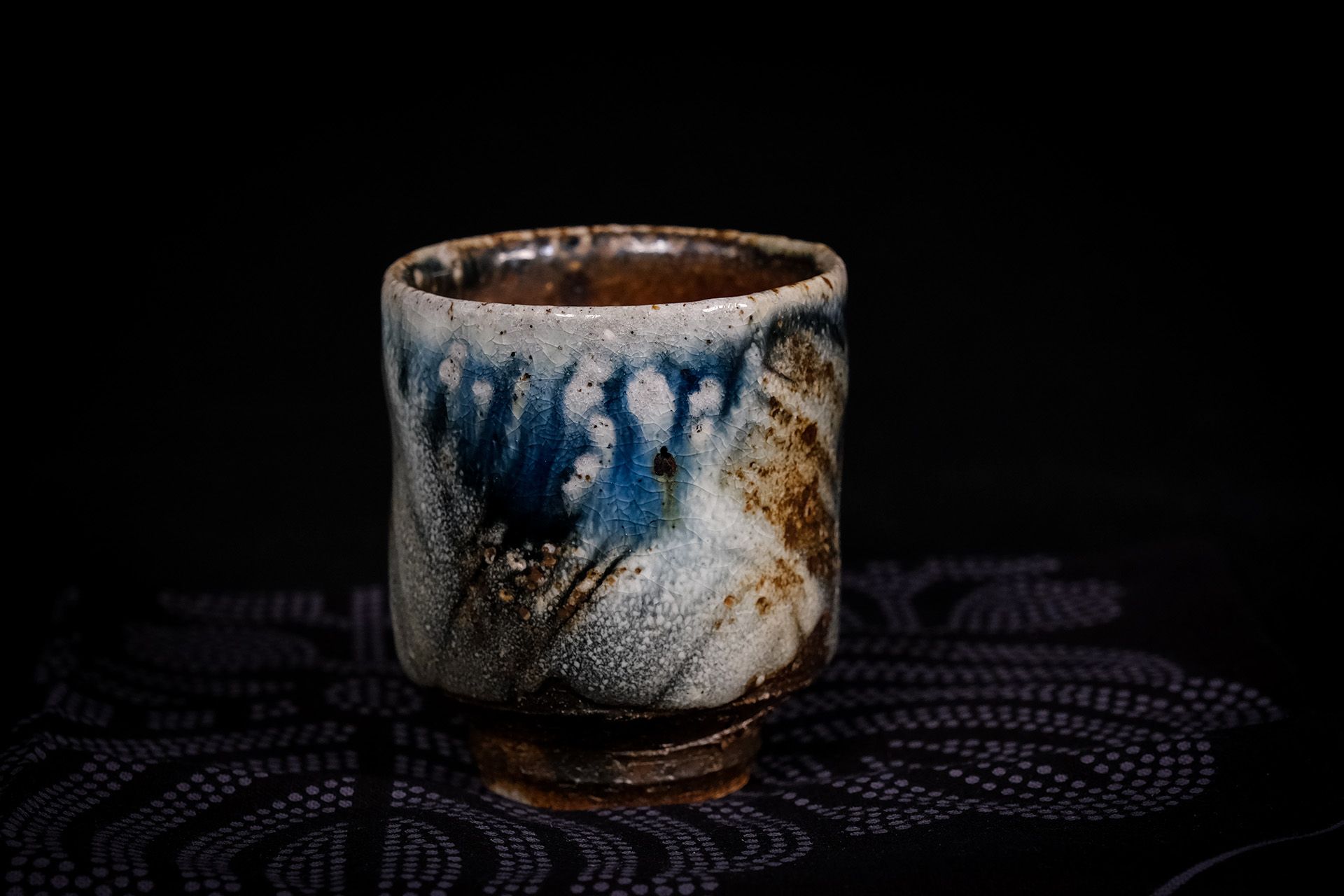
The humble yunomi
The yunomi is the workhorse of Japanese teaware. It’s the cup where you’ll be offered tea at a shop, a restaurant, an office or when visiting someone’s home. You’ll find it in daily use by people of all classes and backgrounds.
Broadly speaking, Japanese tea cups and bowls can be classified as chawan, yunomi and guinomi. The chawan is at the apex of the hierarchy. Simply meaning tea bowl, it’s revered as the centre of the universe of cha-do, the way of tea. Chawans are also the biggest of the three and drinking from them requires that you hold them with both hands. Every aspect of a chawan has a name and has been endlessly discussed by makers, collectors and scholars.
The guinomi is the smallest of them all but comes second in prestige. They are more commonly used to drink sake but can also function as a small cup for precious teas like gyokuro or in the gongfu style of tea associated with China and Taiwan. Because you can’t pour much liquid into a guinomi (there’s no definite number, however 20 to 40 ml of liquid would be a good reference), it’s the perfect vessel for gatherings where serving tea (or sake) to the guests is part of a social ritual, like during a tasting session or as part of a kaiseki meal consisting of multiple courses. A guinomi can look like a miniature chawan, being often wider than tall.
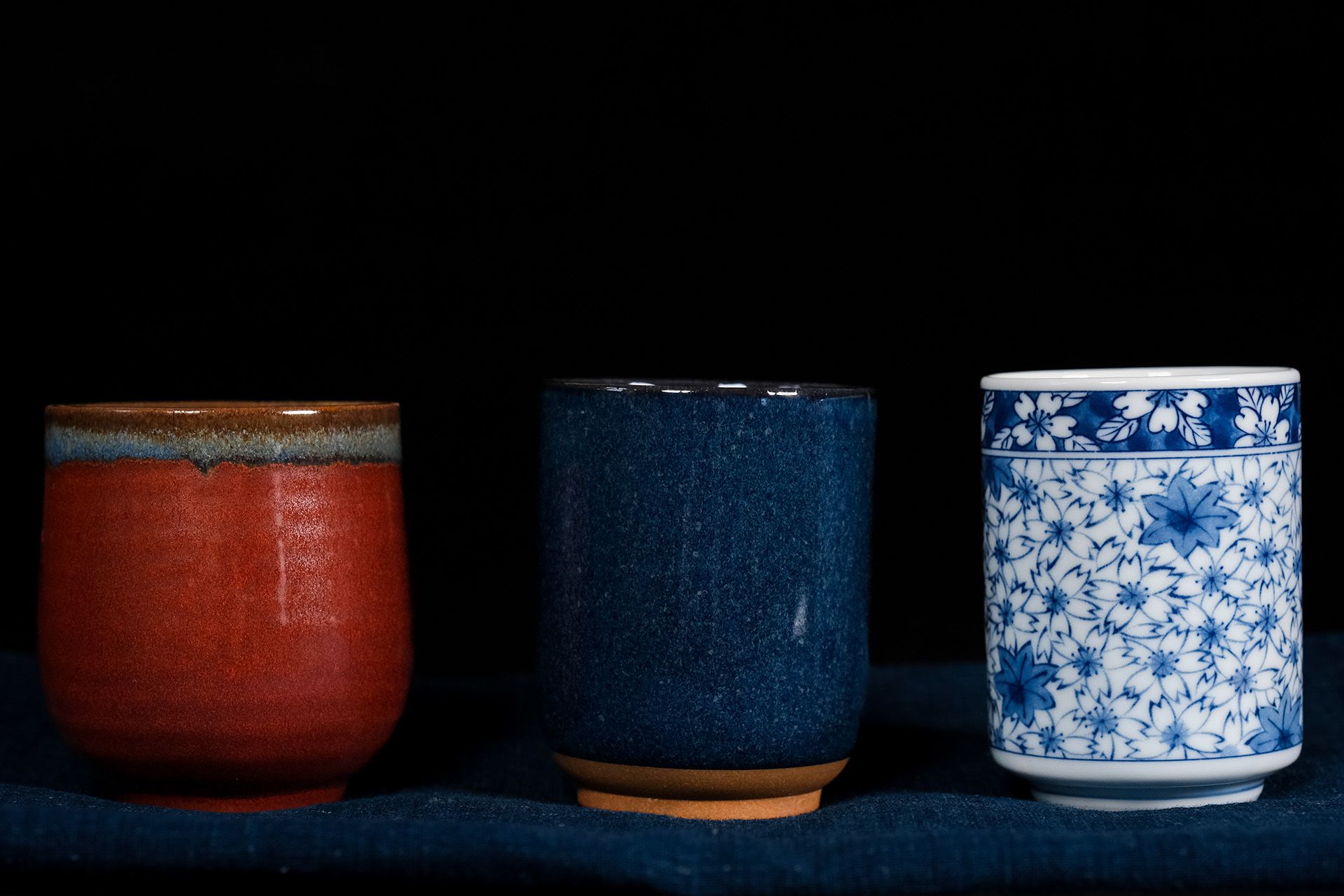
And then there’s the yunomi, the workhorse of Japanese tea. Made to drink steeped teas like sencha, bancha or hojicha, it’s the cup where you’ll be offered tea at a shop, a restaurant, an office or when visiting someone’s home. You’ll find it in daily use by people of all classes and backgrounds. Like the other two, the yunomi does not have a handle. Its size sits in-between that of a chawan and a guinomi but it tends to be taller than wide and with straight walls, although some of my favourites have a plump “waist”. Its shape and size contributes to keeping its contents hot and make it easy to drink one-handed.
In Japan, the yunomi shape is the first one that a potter learns to make on the potter’s wheel (in the west it’s throwing a cylinder). Because of their everyman connotation, yunomis are significantly cheaper than chawans and guinomis, as the price of a tea bowl is not directly related to its size but to the meaning that it carries. An inexpensive and hastily made object like the bowl that a farmer might use to eat rice can be elevated to precious tea stardom like with the famous Ido-style Korean chawans. That would never happen with a yunomi.
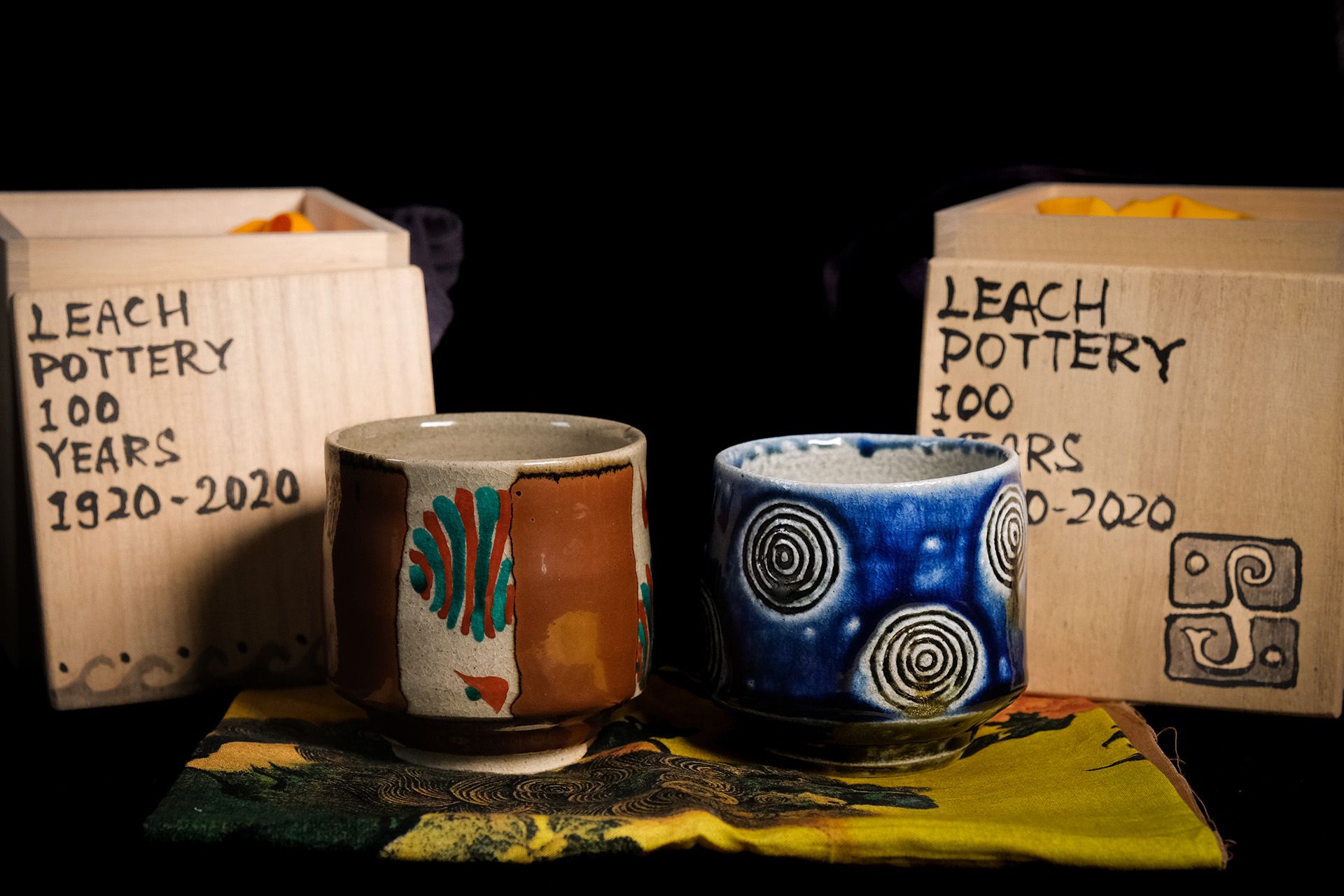
I like yunomis because they are utilitarian and unpretentious. Because a maker will often use the same materials and techniques they use for chawans to create a yunomi, it’s a great way to acquire the work of a craftsperson that you admire even if you don’t have much money. That’s how I got hold of a pair made by Tomoo Hamada to commemorate the 100 years since the establishment of the Leach Pottery in St Ives, Cornwall. Tomoo-san is grandson of Shōji Hamada, who was a Japanese Living National Treasure, a leading figure of the Mingei folk craft movement, and co-founder with Bernard Leach of the Leach Pottery in 1920. These cups came in their own signed kiribako, the paulownia wood boxes that are typically used to identify and store higher quality objects. My daily rotation also includes a few cheap, “made in Japan”, mass produced yunomi that I acquired at a shop in Milan’s Chinatown twenty years ago. When a friend taking their first steps into Japanese ceramics asks me where to start from, I always recommend a yunomi.
It is said that you can find the whole cosmos in a tea bowl. While not part of the major arcana of ceramics, to me, the humble yunomi outshines its more famous siblings by being practical and bringing people together in daily life.
